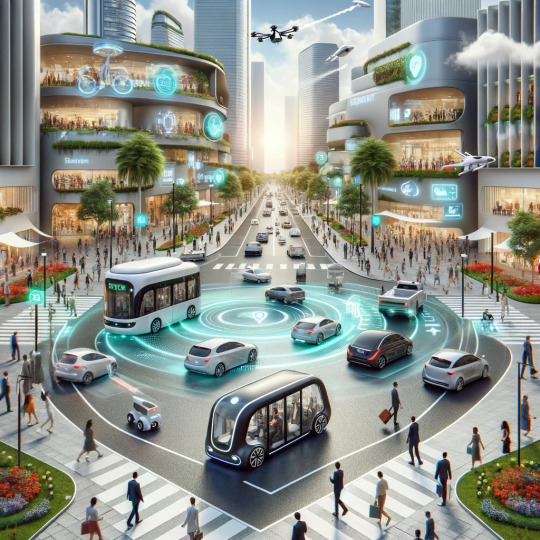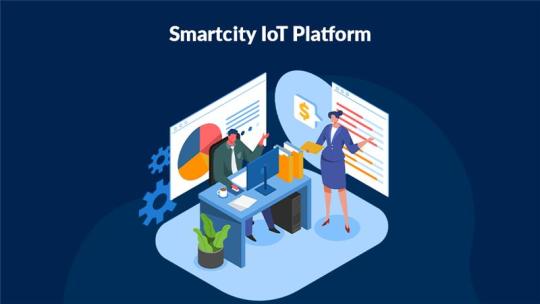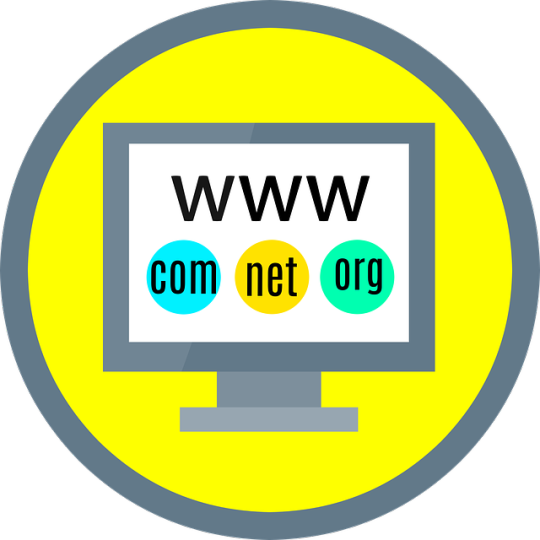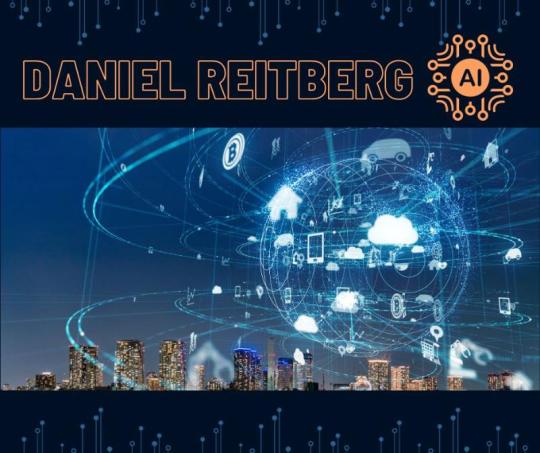#Intelligent Traffic Management
Explore tagged Tumblr posts
Text
Smarter Highways with AI Traffic Management
Imagine highways where traffic flows smoothly, accidents are detected instantly, and congestion is intelligently avoided. That’s the power of an AI-based traffic management system.
From automatic number plate recognition to real-time incident alerts, AI traffic management is transforming highways into safer, smarter, and more efficient corridors.
With intelligent traffic management systems, authorities can now make data-driven decisions, enhance enforcement, and ensure seamless highway mobility all with minimal human intervention.
AI is not the future. It's already on the road.
#traffic#traffic management#ai#artificial intelligence#anpr#traffic life#intelligent traffic management#highway#smart highways
2 notes
·
View notes
Text
Driving Innovation: Exploring the Impact of AI on the Road to Smart Mobility
The integration of Artificial Intelligence (AI) with automotive technology is no longer just a concept from science fiction; it’s rapidly becoming a central part of how we envision the future of transportation. As cars become more than just a means to get from point A to point B, the role of AI in enhancing the driving experience and vehicle functionality has become increasingly important. This…

View On WordPress
#AI-Driven Car Features#Artificial Intelligence in Automotive#Automotive Industry Trends#Autonomous Vehicles Technology#Connectivity and IoT in Cars#Electric Vehicles and AI Integration#Future of Transportation#Innovations in Vehicle Navigation#Intelligent Traffic Management#Safety Enhancements through AI#Smart Mobility Solutions#Sustainable Automotive Innovations#User Experience in Smart Cars
0 notes
Text
The Transformative Benefits of Artificial Intelligence
Title: The Transformative Benefits of Artificial Intelligence Artificial Intelligence (AI) has emerged as one of the most revolutionary technologies of the 21st century. It involves creating intelligent machines that can mimic human cognitive functions such as learning, reasoning, problem-solving, and decision-making. As AI continues to advance, its impact is felt across various industries and…

View On WordPress
#Advancements in Education#AI Advantages#AI Benefits#artificial intelligence#Customer Experience#Data Analysis#Data Analytics#Decision-Making#Efficiency and Productivity#Energy Management#Ethical AI Deployment.#Healthcare Transformation#Machine Learning#Personalized Learning#Personalized User Experiences#Robotics in Healthcare#Smart Cities#Smart Technology#Smart Traffic Management#Sustainable Development
2 notes
·
View notes
Text
Making Roads Safer with AI Based Traffic Management System
Every violation caught is a life saved. The ai based traffic management system identifies: • Speeding and dangerous driving • Unauthorized entry in restricted areas • Safety gear non-compliance
Ai traffic management strengthens enforcement with zero delay.
0 notes
Text
Inside Mumbai’s Smart Traffic Management Revolution
Introduction Mumbai, India’s bustling financial capital, has long grappled with traffic congestion. In response, the Brihanmumbai Municipal Corporation (BMC) has embarked on a transformative journey to implement smart traffic management solutions, leveraging cutting-edge technologies to streamline vehicular movement and enhance road safety. BMC’s Intelligent Traffic Signal Initiative The BMC…
#AI in India#AI traffic management#BMC initiatives#intelligent transportation systems#Mumbai traffic#smart city Mumbai#smart traffic signals#traffic congestion solutions#traffic technology#urban mobility
0 notes
Text
Intelligent Traffic Management Systems Market set to hit $55.0 billion by 2035
Industry revenue for Intelligent Traffic Management Systems is estimated to rise to $55.0 billion by 2035 from $15.7 billion of 2024. The revenue growth of market players is expected to average at 12.1% annually for the period 2024 to 2035.
Intelligent Traffic Management Systems is critical across several key applications including traffic congestion management, highway management, emergency response systems and smart parking solutions. The report unwinds growth & revenue expansion opportunities at Intelligent Traffic Management Systems’s Solution Type, Component Type, End User and Application including industry revenue forecast.
Industry Leadership and Competitive Landscape
The Intelligent Traffic Management Systems market is characterized by intense competition, with a number of leading players such as Siemens AG, Thales Group, TomTom, Inc, FLIR Systems, Inc, IBM Corporation, Kapsch TrafficCom AG, Q-Free ASA, SWARCO AG, Cisco Systems, Inc, Iteris, Inc, LG CNS Co. Ltd and Ricoh Company Ltd.
The Intelligent Traffic Management Systems market is projected to expand substantially, driven by surge in urban population and increasing need for real-time information. This growth is expected to be further supported by Industry trends like Technological Advancements in Traffic Management.
Detailed Analysis - https://datastringconsulting.com/industry-analysis/intelligent-traffic-management-systems-market-research-report
Moreover, the key opportunities, such as leveraging ai for predictive traffic control, integration of iot in traffic management and collaborative traffic management systems, are anticipated to create revenue pockets in major demand hubs including U.S., China, Germany, Japan and UK.
Regional Shifts and Evolving Supply Chains
North America and Europe are the two most active and leading regions in the market. With challenges like high installation and maintenance cost and technological adaptability concerns, Intelligent Traffic Management Systems market’s supply chain from research & development / component manufacturing / systems integration & testing to end user application is expected to evolve & expand further; and industry players will make strategic advancement in emerging markets including India, Mexico and South Africa for revenue diversification and TAM expansion.
About DataString Consulting
DataString Consulting offers a complete range of market research and business intelligence solutions for both B2C and B2B markets all under one roof. We offer bespoke market research projects designed to meet the specific strategic objectives of the business. DataString’s leadership team has more than 30 years of combined experience in Market & business research and strategy advisory across the world. DataString Consulting’s data aggregators and Industry experts monitor high growth segments within more than 15 industries on an ongoing basis.
DataString Consulting is a professional market research company which aims at providing all the market & business research solutions under one roof. Get the right insights for your goals with our unique approach to market research and precisely tailored solutions. We offer services in strategy consulting, comprehensive opportunity assessment across various sectors, and solution-oriented approaches to solve business problems.
0 notes
Text
Computer Vision Applications in Transportation
Computer vision applications in transportation are becoming more widespread and trending. With the help of AI vision technology, supply chain, and transportation facilities are improving their efficiency and advancing their supply chain and logistics management systems.
Computer vision solutions have digitized the way transportation activities operate. This technology handles the entire transportation flow, from the movement of goods to the logistics process. Additionally, it supports human operation in transportation through AI-visual capabilities, reducing human error and enhancing safety.
Apart from this, computer vision in transportation is also useful for tracking real-time traffic and logistics movements using image detection and object detection technology. It enables automatic number plate recognition (ANPR) and real-time movement tracking, helping logistics management make critical decisions with accurate time estimates, further improving supply chain operations.
What is Computer Vision in Transportation?
Computer vision in transportation is shaping the future of the sector by reducing accident risks and improving cost-effective logistics management. AI-powered image and object detection track traffic patterns like human vision—but with greater speed and accuracy.
According to the World Health Organization (WHO), over 1.35 million people worldwide die in road accidents each year. To mitigate such accidents, industries like healthcare, retail, security, manufacturing, and agriculture are leveraging computer vision solutions effectively.
Read More: Top 8 Computer Vision Use Cases in Agriculture
How Computer Vision is Transforming the Transportation Industry
The global logistics system has faced disruptions due to various global challenges, increasing concerns regarding effective transportation facilities. In response, companies like Uber, Seven Drive, and Deliveroo are leading the way by utilizing computer vision applications in transportation. AI-vision technology enhances transportation by facilitating real-time activities, improving passenger safety, reducing traffic congestion, lowering carbon emissions, and minimizing accident risks.
Several computer vision technologies are revolutionizing transportation, including:
Image segmentation
Object detection
Facial recognition
Edge detection
Pattern detection
Image classification
Feature matching
These technologies play a crucial role in detecting and classifying objects (e.g., road signs and traffic lights), creating 3D maps, estimating motion, and enabling autonomous vehicles.
According to a market research report by MarketsandMarkets, "The global market for AI in transportation was valued at $1.2 to $1.4 billion in 2017 and is expected to grow to $3.5 billion by 2023, at a compound annual growth rate (CAGR) of 12-14.5%."
Applications of Computer Vision in Transportation
Corporations, industrialists, manufacturers, and governments are the biggest users of computer vision technology in transportation. It is particularly useful for governments to manage traffic flow and enhance transportation facilities, contributing to economic growth. Additionally, corporations are developing AI-driven solutions to improve their logistics and transportation efficiency.

Keyways Computer Vision is Transforming Transportation:
1. Detecting Traffic and Traffic Signs
Computer vision services are widely used in traffic management, helping to save transportation time and fuel. By detecting vehicle numbers and monitoring traffic conditions, it streamlines traffic flow and optimizes signal timing. Computer vision applications can also be connected with cameras to intelligent transportation systems (ITS) to identify various incidents and anomalies.
2. Traffic Flow Analysis
Urban congestion is a growing concern, leading to issues such as noise pollution, financial losses, and increased carbon emissions. AI-integrated drones and camera surveillance help monitor traffic flow, track vehicle movements, and alert drivers to potential accident risks. Traffic monitoring solutions can detect the following:
Vehicle speed
Wrong-way movement
Stopped vehicles
Other traffic violations
3. Parking Management
Smart parking management systems enable real-time tracking of available parking spots. The system identifies occupied and vacant parking lots, improving parking efficiency in high-traffic areas like airports, shopping malls, and hospitals. Automated parking solutions help reduce congestion and enhance user convenience.
4. Automatic Number Plate Recognition (ANPR)
Automatic Number Plate Recognition (ANPR) offers an optimal solution for efficient parking and traffic management. It allows registered vehicles to enter parking areas automatically while identifying non-registered vehicles based on check-in and check-out times. ANPR also assists law enforcement in tracking stolen or suspicious vehicles.
5. Detecting Stopped Vehicles and Road Obstacles
Pedestrians, trees, diversions, and other obstacles contribute to road safety risks. AI-powered computer vision models can detect stopped vehicles and potential hazards in real-time. By processing video feeds from surveillance cameras, AI-driven solutions enhance road safety by issuing instant alerts to drivers and traffic authorities.
The Future of Computer Vision in Transportation
With the rapid advancement of AI and computer vision, the transportation industry is undergoing a paradigm shift. From self-driving cars to smart traffic systems, transportation is becoming more automated and data-driven. As AI technology evolves, its integration into transportation will continue to enhance efficiency, safety, and sustainability.
Stay tuned for more updates on emerging AI-powered transportation solutions!
#Computer Vision in Transportation#AI in Logistics#Smart Mobility Solutions#Traffic Management AI#Autonomous Vehicles#ANPR Technology#AI Traffic Flow Analysis#Intelligent Transportation Systems
1 note
·
View note
Text
How Smartcity IoT Platforms Are Driving Smart Urban Solutions?
Smart cities are getting more popular. But how might smart cities enhance people’s lives and be useful? First and foremost, technology contribute to a city’s economic growth by bringing new business models, cutting energy costs, and improving quality of life. Smart city development entails much more than simply assembling a collection of smart city sensors and expecting that it would enhance…

View On WordPress
#ai#artificial intelligence#big data#Cloud Computing#Internet of Things#IoT sensors#Smart City IoT#traffic management#urban planning#urbanization
0 notes
Text

0 notes
Text
AI-Based Traffic Management System: When Cameras Replace Chaos
A traffic cop can’t be everywhere, but AI can. An AI-based traffic management system monitors every lane, not just when someone complains. AI traffic management uses real-time visuals, not assumptions. It spots violations, stalled vehicles, and wrong-way drivers, before they cause disasters. An intelligent traffic management system doesn’t need a lunch break. It just works, day or night, rain or shine. For cities serious about order, the era of blind enforcement is over.
#roadsafety#analytics#trafficmanagement#smartcity#urbanmobility#intelligent traffic management#AI traffic management#Vehicle Analytics#artificial intelligence#ai#technology
1 note
·
View note
Text
Automaattinen Tienaaminen - Owning Your Domain (in English)
Owning Your Domain. The article discusses the concept of owning one’s domain in the context of ONPASSIVE, emphasizing the significance of providing users with full ownership and control over their digital property. It highlights the uniqueness and credibility that such ownership grants, with the assertion that individuals will have ownership of their properties within the ONPASSIVE ecosystem. The…

View On WordPress
#amazon#artificial intelligence#business#business model#communicate#digital landscape#digital property#domain#ecosystem#havaintoja digimaailmasta#learn#manage staff#market#one location#one stop shop#ONPASSIVE#ownership#owning domain#run a shop#traffic#transfer money#your business#your domain
0 notes
Text
Connected Journeys: Navigating Trends in the Intelligent Transportation System Market
The intelligent transportation system market will reach USD 102,617.3 million, propelling at a 10.2% CAGR, by 2030.
The growth of the industry is attributed to the rising adoption of advanced communication technologies, the growing requirement to enhance transportation safety and traffic flow, and the increasing population all over the world, which is boosting land vehicle sales.

In 2021, the services category held the largest revenue share, of approximately 50%, and it will remain the largest in the years to come. This is because of the requirement to increase the efficiency and connectivity of surface transportation networks, which needs the proper maintenance of intelligent transportation system equipment.
Advanced public transportation systems will observe the fastest growth in the years to come, with a 9% CAGR. This is credited to the increasing investment in real-time gathering and analysis of information for roadways, growing public–private partnerships, and the requirement to enhance the public transportation network’s operational effectiveness as well as passenger services.
In 2021, the advanced traffic management system held the largest intelligent transportation system market revenue share, and it will remain the largest in the years to come. This is because of their widespread adoption of roadways, the growing number of vehicles and commuters in cities, and rising concerns of people regarding decreasing the levels of pollution and traffic congestion.
Based on application, in 2021, the roadways category held the largest revenue share, and it will maintain its position in the coming years. This is because of rapid urbanization, increasing requirements for parking management, the rising rate of vehicle ownership, mounting congestion of traffic in smart cities, and the enormous number of companies that provide such solutions for terrestrial commuting.
APAC will observe the fastest growth, with approximately 8% CAGR, in the years to come. This is because of the emerging transportation infrastructure, rapid urbanization, increasing disposable income, rising industry of automobiles, and speedily developing infrastructure of roads in India and China.
Furthermore, in 2021, China accounted for the largest revenue share, and it will remain the largest in the years to come. This is attributed to the growing number of daily commuters in the nation, initiatives taken by the government to decrease emissions, and the increasing usage of new advanced technologies.
#intelligent transportation system#ITS technology#market trends#connected vehicles#smart cities#global market outlook#traffic management#market dynamics#infrastructure integration
0 notes
Text
AI Based Traffic Management System Supporting Autonomous Vehicles
The rise of autonomous vehicles needs intelligent roads, and the AI based traffic management system is key. • Enables vehicle-to-infrastructure (V2I) communication • Regulates traffic flow for AV safety • Provides real-time road condition data
AI and AVs together create the highways of tomorrow.
0 notes
Text
Stray animals are the second most common reason for accidents, deaths, and hazards: How AI Video Analytics tackles such problems

Stray animals are a growing problem in cities around the world. They are unable to find food and shelter, so due to that, they stay on roads, which present a dangerous hazard to road traffic and pedestrians alike.
According to the data, there are 1,376 accidents caused by animals, which involve 804 dogs and 350 cattle. We often blame bad roads for road accidents and injuries, but nowadays the second most common reason for road accidents and injuries is stray animals. Stray animals are not the problem; these innocent animals are not getting proper shelter and food to survive, and for that reason, they have to come on the road in search of food and shelter.
To address this issue, many cities are turning to artificial intelligence (AI) video analytics to detect and alert municipal and animal health care departments. They can then respond to the alert by sending out animal health care workers to take care of the stray animals. By using stray animal detection, cities can help prevent accidents and injuries due to animals on the roads and promote smooth mobility.
#ai#artificial intelligence#traffic management#smart city#video analytics#road accident#traffic safety#road safety#pedestrian safety#stray animals#innovative technology#intozi#intozitechnology
0 notes
Text
Smart Cities and AI-Powered Traffic Management

In the ever-evolving landscape of urban development, the fusion of technology and city planning has given rise to the concept of "Smart Cities." In this article, Daniel Reitberg ventures into the realm of Smart Cities and their transformative approach to traffic management, made possible by the integration of artificial intelligence.
The Growing Challenges of Urban Traffic
As cities around the world continue to expand, traffic congestion has become a ubiquitous issue. Daniel Reitberg underscores the importance of addressing this challenge not only for the convenience of city dwellers but also for reducing pollution and improving overall urban quality of life.
AI's Role in Traffic Management
Artificial intelligence is at the heart of Smart Cities' efforts to manage traffic efficiently. Daniel Reitberg delves into how AI-powered algorithms can analyze vast streams of traffic data in real time. This analysis helps city planners make informed decisions, such as optimizing traffic signal timings or rerouting vehicles to alleviate congestion.
Predictive Analytics for Traffic Flow
Predicting traffic patterns is a crucial aspect of AI-powered traffic management. Daniel Reitberg discusses how AI can forecast traffic conditions based on historical data, events, and even weather. By doing so, cities can proactively manage traffic, preventing bottlenecks and reducing commute times.
Enhancing Public Transportation
Smart Cities prioritize sustainable modes of transportation. Daniel Reitberg explores how AI can improve public transit systems. AI-powered algorithms can optimize bus routes, predict arrival times, and even adjust schedules in response to real-time demand, making public transportation more attractive and efficient.
AI-Powered Traffic Safety
Traffic safety is a paramount concern in any urban environment. Daniel Reitberg highlights how AI's capabilities extend to monitoring and enhancing safety. AI-powered cameras and sensors can detect accidents, traffic violations, and even potential hazards, enabling swift responses from authorities.
The Human Element in AI Traffic Management
While AI plays a pivotal role in Smart City traffic management, Daniel Reitberg emphasizes that it works in tandem with human expertise. City planners, traffic engineers, and law enforcement personnel collaborate with AI systems to make critical decisions and ensure the safety and well-being of citizens.
Challenges and Ethical Considerations
The adoption of AI in traffic management comes with challenges, including data privacy and cybersecurity concerns. Daniel Reitberg discusses these issues and underscores the importance of transparent and ethical AI practices in Smart Cities.
The Future of Smart Cities
In conclusion, Daniel Reitberg's exploration of AI-powered traffic management in Smart Cities paints a vision of urban living that is more sustainable, efficient, and livable. As technology continues to advance, the integration of AI in city planning promises to make our cities not only smarter but also more people-centric, creating environments that prioritize the well-being of their inhabitants.
#artificial intelligence#machine learning#deep learning#technology#robotics#autonomous vehicles#smart city#traffic management#traffic safety#public transportation#urban transportation
0 notes
Photo

NeuraSpace platform assets jump tenfold In six months, Portuguese startup NeuraSpace has gone from 25 to 250 satellites on its space traffic management platform. The post NeuraSpace platform assets jump tenfold appeared first on SpaceNews. https://spacenews.com/neuraspace-platform-assets-jump-tenfold/
#Commercial#News#artificial intelligence#Dragonfly Aerospace#NeuraSpace#Space Traffic Management#World Satellite Business Week#Debra Werner#SpaceNews
0 notes